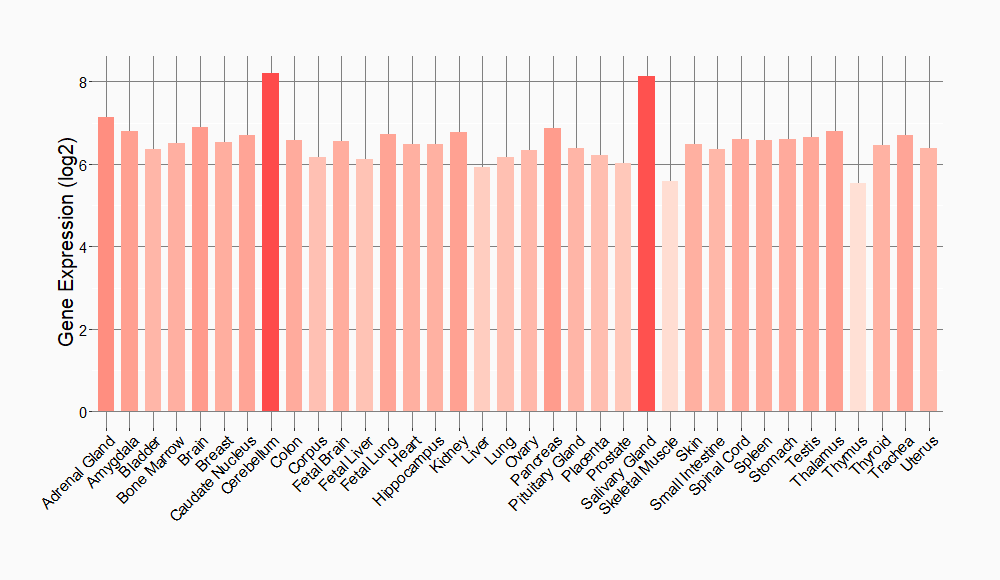Molecule Information
General Information of the Molecule (ID: Mol01980)
| Name |
Dehydrodolichyl diphosphate synthase subunit (DHDDS)
,Homo sapiens
|
||||
|---|---|---|---|---|---|
| Synonyms |
DHDDS; HDS
Click to Show/Hide
|
||||
| Molecule Type |
Protein
|
||||
| Gene Name |
DHDDS
|
||||
| Gene ID | |||||
| Location |
chr1:26,432,282-26,471,306[+]
|
||||
| Sequence |
MSWIKEGELSLWERFCANIIKAGPMPKHIAFIMDGNRRYAKKCQVERQEGHSQGFNKLAE
TLRWCLNLGILEVTVYAFSIENFKRSKSEVDGLMDLARQKFSRLMEEKEKLQKHGVCIRV LGDLHLLPLDLQELIAQAVQATKNYNKCFLNVCFAYTSRHEISNAVREMAWGVEQGLLDP SDISESLLDKCLYTNRSPHPDILIRTSGEVRLSDFLLWQTSHSCLVFQPVLWPEYTFWNL FEAILQFQMNHSVLQKARDMYAEERKRQQLERDQATVTEQLLREGLQASGDAQLRRTRLH KLSARREERVQGFLQALELKRADWLARLGTASA Click to Show/Hide
|
||||
| 3D-structure |
|
||||
| Function |
With NUS1, forms the dehydrodolichyl diphosphate synthase (DDS) complex, an essential component of the dolichol monophosphate (Dol-P) biosynthetic machinery. Both subunits contribute to enzymatic activity, i.e. condensation of multiple copies of isopentenyl pyrophosphate (IPP) to farnesyl pyrophosphate (FPP) to produce dehydrodolichyl diphosphate (Dedol-PP), a precursor of dolichol phosphate which is utilized as a sugar carrier in protein glycosylation in the endoplasmic reticulum (ER). Synthesizes long-chain polyprenols, mostly of C95 and C100 chain length. Regulates the glycosylation and stability of nascent NPC2, thereby promoting trafficking of LDL-derived cholesterol.
Click to Show/Hide
|
||||
| Uniprot ID | |||||
| Ensembl ID | |||||
| HGNC ID | |||||
| Click to Show/Hide the Complete Species Lineage | |||||
Type(s) of Resistant Mechanism of This Molecule
Drug Resistance Data Categorized by Drug
Approved Drug(s)
1 drug(s) in total
| Drug Resistance Data Categorized by Their Corresponding Mechanisms | ||||
|
|
||||
| Disease Class: Breast cancer [ICD-11: 2C60.3] | [1] | |||
| Resistant Disease | Breast cancer [ICD-11: 2C60.3] | |||
| Resistant Drug | Fluvastatin | |||
| Molecule Alteration | Expression | Up-regulation |
||
| Experimental Note | Discovered Using In-vivo Testing Model | |||
| Cell Pathway Regulation | Steroid biosynthesis signaling pathway | Activation | hsa00100 | |
| Terpenoid bacKbone biosynthesis signaling pathway | Activation | hsa00900 | ||
| Steroid hormone biosynthesis signaling pathway | Activation | hsa00140 | ||
| In Vitro Model | MCF-10A-neoT cells | Breast | Homo sapiens (Human) | CVCL_5554 |
| In Vivo Model | SV40 C3TAg transgenic mouse model | Mus musculus | ||
| Experiment for Molecule Alteration |
Clariom D RNA profiling assay | |||
| Experiment for Drug Resistance |
MTT assay; Colony formation assay | |||
| Mechanism Description | Acquired resistance to fluvastatin is mediated by restorative upregulation of cholesterol biosynthesis pathway genes. | |||
Disease- and Tissue-specific Abundances of This Molecule
ICD Disease Classification 02

| Differential expression of molecule in resistant diseases | ||
| The Studied Tissue | Breast tissue | |
| The Specified Disease | Breast cancer | |
| The Expression Level of Disease Section Compare with the Healthy Individual Tissue | p-value: 9.28E-26; Fold-change: -4.29E-01; Z-score: -5.30E-01 | |
| The Expression Level of Disease Section Compare with the Adjacent Tissue | p-value: 4.94E-03; Fold-change: -9.11E-02; Z-score: -1.30E-01 | |
|
Molecule expression in the normal tissue adjacent to the diseased tissue of patients
Molecule expression in the diseased tissue of patients
Molecule expression in the normal tissue of healthy individuals
|
||
| Disease-specific Molecule Abundances |

|
Click to View the Clearer Original Diagram |
Tissue-specific Molecule Abundances in Healthy Individuals


|
||
References
If you find any error in data or bug in web service, please kindly report it to Dr. Sun and Dr. Yu.
